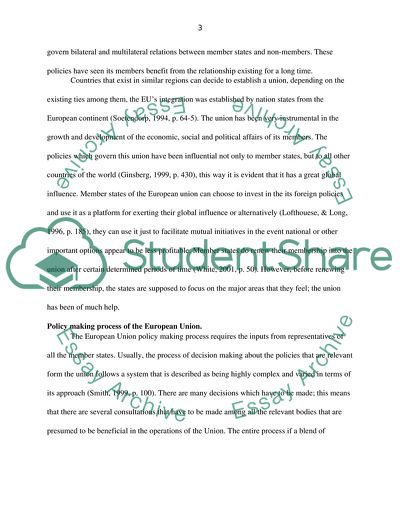Cite this document
(The Entire Decision and Policy-Making Process in the European Union Article Example | Topics and Well Written Essays - 1750 words, n.d.)
The Entire Decision and Policy-Making Process in the European Union Article Example | Topics and Well Written Essays - 1750 words. https://studentshare.org/history/1817416-foreign-policy-briefing
The Entire Decision and Policy-Making Process in the European Union Article Example | Topics and Well Written Essays - 1750 words. https://studentshare.org/history/1817416-foreign-policy-briefing
(The Entire Decision and Policy-Making Process in the European Union Article Example | Topics and Well Written Essays - 1750 Words)
The Entire Decision and Policy-Making Process in the European Union Article Example | Topics and Well Written Essays - 1750 Words. https://studentshare.org/history/1817416-foreign-policy-briefing.
The Entire Decision and Policy-Making Process in the European Union Article Example | Topics and Well Written Essays - 1750 Words. https://studentshare.org/history/1817416-foreign-policy-briefing.
“The Entire Decision and Policy-Making Process in the European Union Article Example | Topics and Well Written Essays - 1750 Words”. https://studentshare.org/history/1817416-foreign-policy-briefing.


